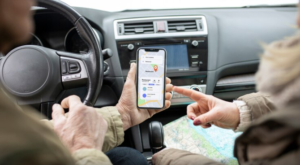
Ride-sharing applications came, changed the way people traveled, and brought a new wave of convenience, flexibility, and affordability. Safety, however, is one of the most crucial concerns linked with the companies. Companies dealing in ride-sharing business have introduced a number of features in order to make the travel experience safe and comfortable for their users. Here’s a closer look at some top safety features in modern ride-sharing apps that make them the trusted choice for millions of travelers across the world.
1. Driver Background Checks
The onboarding process for drivers on any ride-sharing app always constitutes a strict background check. In most cases, it will include thorough screening for criminal records, driving history, and verification of identity.
Key Elements:
- Criminal Record Check: Drivers should not have any serious or major criminal history.
- Driving Record: A check on all past driving offenses to ensure that the driver has a good driving history.
- Identity Verification: To confirm the identity of the driver through official documents and sometimes biometric verification.
2. Real-Time GPS Tracking
Real-time GPS tracking is one of the principal features of ride-sharing safety. This feature enables passengers and the company to track the location of the vehicle during a ride.
Benefits:
- Location Sharing: Using this feature, passengers will be able to share their ride details, inclusive of real-time location, with friends or family.
- Route Optimization: This ensures that drivers take only the safest and most efficient routes.
- Emergency Response: Enables quick location tracking in case of an emergency.
3. In-App Emergency Assistance
In most ride-sharing applications, there is in-app emergency support that operates instantly in an emergency. This includes the in-app emergency button that will connect passengers with emergency services or the support team of the ridesharing company instantly.
Key Features:
- Emergency Button: Provides instant access to emergency services.
- 24/7 Support: Round-the-clock customer support for any safety concerns.
- Alert System: Sends an alert with the passenger’s real-time location to pre-selected contacts.
4. Driver and Vehicle Identification
Detailed information is provided to the passenger about the driver and the car before the ride. This includes the driver’s name, photo, vehicle make and model, and license plate number.
Advantages:
- Driver Verification: Passengers can verify the driver’s identity before entering the vehicle.
- Vehicle Match: Ensures the vehicle matches the details provided in the app.
- Enhanced Trust: Builds trust and reassurance for passengers.
5. Rating and Review System
The rating and review system lets passengers give feedback about their ride experience. Drivers are also allowed to rate the passengers. This mutual feedback mechanism helps in maintaining high standards of service and promotes accountability.
Key Benefits:
- Quality Control: Assures that drivers and passengers stick to community guidelines.
- Improvement Feedback: Allows the ride-sharing company to address any issues and improve services.
- Informed Choices: Passengers can make informed decisions based on driver ratings.
6. Ride Recording
Certain ride-sharing applications have integrated features into their design, enabling the recording either of audio or video while taking the ride. This feature can act as an added layer of security for both passengers and drivers.
Use Cases:
- Dispute Resolution: Helps resolve any disputes that may arise during the ride.
- Evidence Collection: Provides evidence in case of any incidents or safety concerns.
- Transparency: Enhances transparency and trust between drivers and passengers.
7. Insurance Coverage
Generally speaking, ride-sharing companies tend to offer insurance coverage on the protection of passengers on a ride. This usually consists of personal injury protection, liability, and uninsured/underinsured motorist coverage.
Coverage Details:
- Personal Injury: Provides medical expenses related to passenger injuries during transport.
- Liability: Damage caused by the driver would be covered under this in case of an accident to others.
- Uninsured Motorist: Protects passengers in situations where the driver is struck by an uninsured or underinsured driver.
8. Health and Safety Protocols
Due to the current global health issues, ride-sharing apps have engaged in very severe health and safety measures. These include sanitization of the vehicle, wearing masks by the driver, and checking drivers for temperatures.
Safety Measures:
- Sanitization: Regular cleaning and disinfecting of vehicles.
- Mask Mandates: Required mask-wearing for drivers and passengers.
- Health Checks: Health screenings and temperature checks for drivers.
Conclusion
With modern ride-sharing applications, the safety and security of the users have been ensured to a great extent. The platforms are quite reliable and secure to use for transportation by carrying out thorough background checks of the drivers, real-time GPS tracking, in-app emergency support, identification of drivers and their vehicles, rating and reviewing, recording of rides, comprehensive insurance, and health and safety measures. Embrace these safety features and enjoy a worry-free ride with your preferred ride-sharing app.
